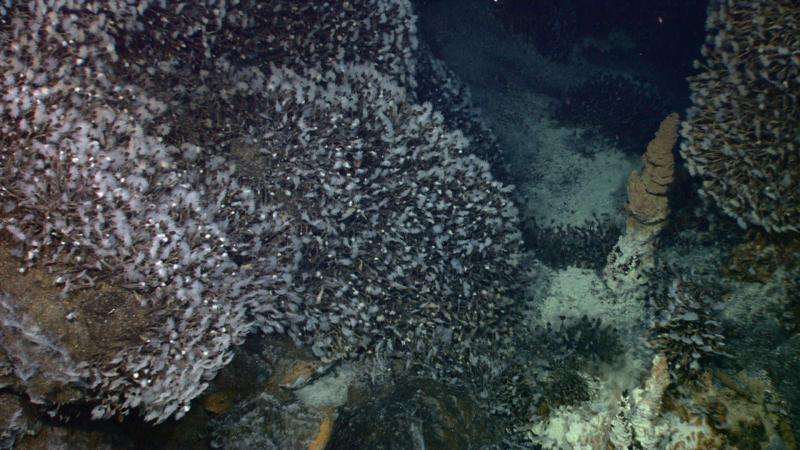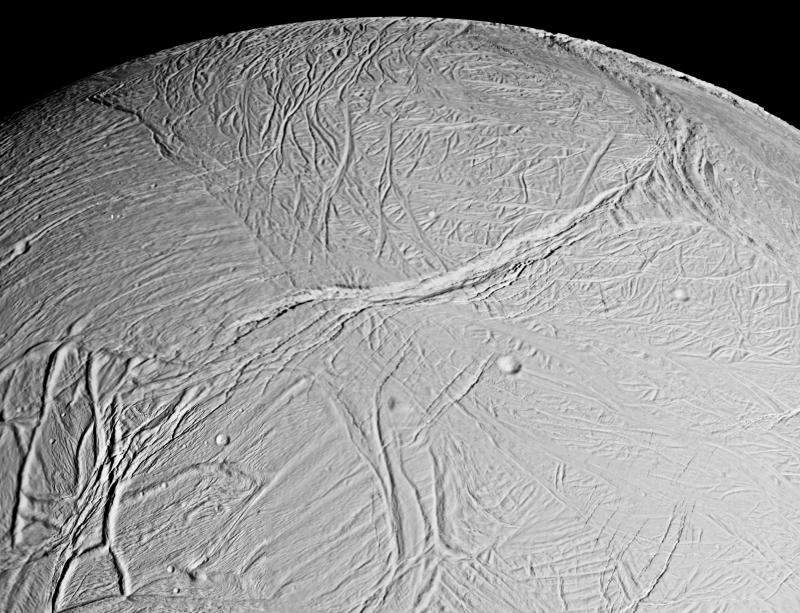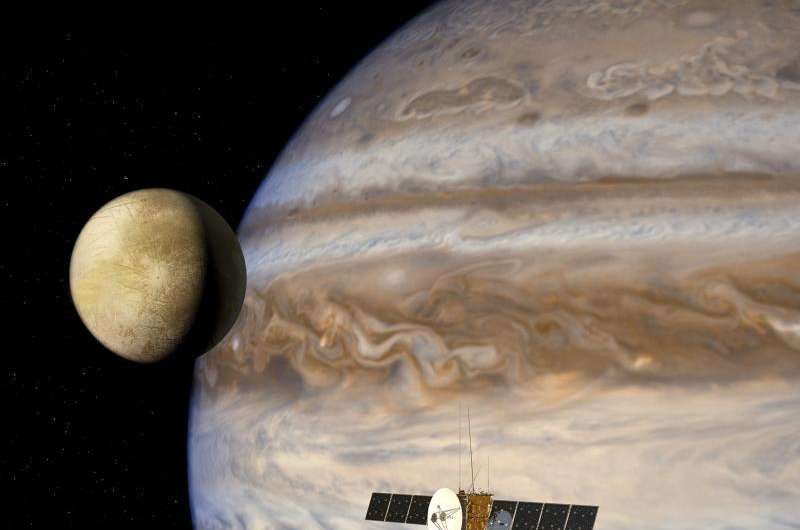Barnacles explain life at the extreme

Barnacles—a type of marine crustacean—are highly adaptable animals. Unlike many other groups that prefer quieter waters, they like areas with a lot of activity, are hardy against dry spells that sometimes occur in tidal zones, and can even persist in waters that are becoming more acidic due to human pollution.
Species such as this are of great interest to astrobiologists because they are curious about what sort of life may exist in watery zones away from Earth. Our solar system is full of icy moons – for example, Jupiter's Europa or Saturn's Enceladus—that likely have global oceans under their crusts. Finding out how species on Earth exist in harsh environments could help scientists understand ways life might colonize the Outer Solar System.
"If the ecosystems there function in a similar way to the ones we have on Earth, we would expect similar processes," said Santiago Herrera, a postdoctoral fellow in biology at the University of Toronto in Canada.
At the time he did his research on barnacles, he was obtaining his joint doctorate in biological oceanography at the Massachusetts Institute of Technology and Woods Hole Oceanographic Institution. The outcome of Herrera's barnacle research was published in January 2015 in the journal Molecular Ecology, titled "Evolutionary and biogeographical patterns of barnacles from deep-sea hydrothermal vents."
Looking at vents
Herrera's research centered on how barnacles distribute themselves in time and space. Part of his interest was driven by the effects humans may have on these marine creatures through pollution, deep-sea mining and disruption of climate patterns. But Herrera and his team was also interested in how barnacles distribute themselves in deep-sea vents, such as those found in the Pacific and Indian oceans.

Vents are considered a proxy of the extreme conditions that might comprise an extraterrestrial habitat. Because vents often contain energy and chemicals spewing from beneath the surface, they can act as a catalyst for organisms seeking life.
To gain more information about how the barnacles are distributed, Herrera's team examined roughly 20 years of samples from different expeditions. All told, they had more than 100 specimens collected from several dozen vent fields worldwide.
Unlike many past studies, the group also used new DNA analysis methods that allowed them to sequence thousands of regions across the barnacle's genomes. According to Herrera, it was the first time those methods were used for animals living in hydrothermal vents.

Different origin stories
To the scientists' surprise, they found that the barnacles do not have a single evolutionary origin. Most of the barnacle species belong to one group, while only one or two species belong to the second group. It appears that barnacles did two independent colonizations of vents in history, starting around the same time as the dinosaurs went extinct, 65 million years ago.
The highest biodiversity of barnacles is in the western Pacific, which Herrera said is interesting because other marine and deep-sea species in that region also have high biodiversity. It also appears that there was a barnacle migration from there into the eastern Pacific, that then continued into the Indian Ocean, a migration that followed the dominant ocean currents of the time.
While finding a specific application to life on other planets is difficult at this time, Herrera suggested the ways in which ocean currents distribute life on Earth could apply icy moons, provided that the conditions are right for life there in the first place.
More information: "Evolutionary and biogeographical patterns of barnacles from deep-sea hydrothermal vents." Molecular Ecology, 24: 673–689. doi: 10.1111/mec.13054
Journal information: Molecular Ecology
Source: Astrobio.net
This story is republished courtesy of NASA's Astrobiology Magazine. Explore the Earth and beyond at www.astrobio.net .




















